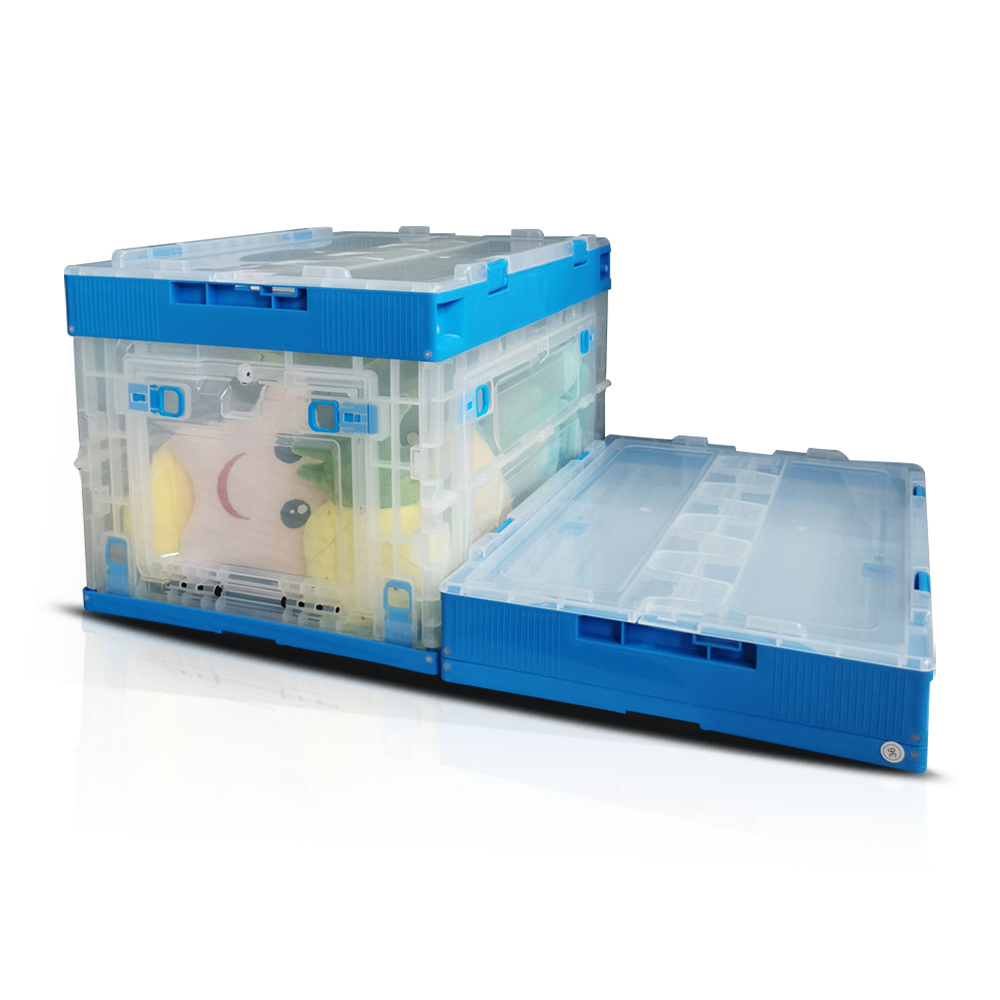The shape and size variability of plastic storage crate significantly impact their load-bearing capacity and the distribution of weight within and on the bins. Here are some key aspects to consider:
Structural Integrity and Material Stress
Shape Impact: The geometry of a plastic storage crate influences how stress is distributed across its surface. For instance, bins with rounded corners and smooth transitions are typically better at distributing load and stress uniformly, reducing the likelihood of stress concentration points that could lead to cracks or deformations.
Size Impact: Larger bins have more surface area to distribute the load but also need to withstand higher stresses due to their increased volume. The thickness of the bin walls and the material’s strength become critical factors in maintaining structural integrity under load.
Load-Bearing Capacity
Load Distribution: The ability of a bin to bear weight depends on how the load is distributed. Uniformly shaped bins, such as rectangular or square ones, can distribute loads more evenly across their base and walls. Irregular shapes may lead to uneven load distribution, causing higher stress in certain areas, which can compromise the bin’s load-bearing capacity.
Weight Capacity: The dimensions of a bin affect its weight capacity. For example, a taller bin may have a higher capacity but could become unstable if the load is not evenly distributed. Similarly, wider bins can support more weight but require adequate structural support to prevent bending or collapsing.
Stacking Stability
Shape Influence: The ability to stack bins efficiently is influenced by their shape. Bins with straight, vertical sides are easier to stack because they align better and distribute weight directly downwards. Tapered bins, which are narrower at the bottom, might not stack as stably because the weight is not as uniformly supported.
Size Matching: When bins of different sizes are stacked, the weight distribution can become uneven, leading to instability. Larger bins at the bottom can support more weight, while smaller bins on top should carry lighter loads to prevent toppling.

Design Features for Load Distribution
Reinforcements: Features such as ribbed walls or reinforced bases can enhance a bin’s load-bearing capacity. These design elements help distribute stress more evenly across the bin, preventing weak points and increasing the overall weight the bin can support.
Handles and Grips: The placement and design of handles also affect load distribution. Poorly designed handles can create stress points, leading to cracks or breaks when the bin is lifted with a heavy load.
Material Considerations
Wall Thickness: Thicker walls generally allow for higher load-bearing capacity as they can better withstand internal and external pressures. However, this must be balanced with weight and ease of handling.
Material Properties: The type of plastic used impacts load-bearing capacity. For example, high-density polyethylene (HDPE) and polypropylene (PP) are commonly used for their strength and durability. The material must be chosen based on the expected loads and environmental conditions.
Impact of Variability on Use Cases
Versatility: Bins of different shapes and sizes cater to various storage needs. For example, long and shallow bins may be better for storing under beds, while tall bins are suitable for storing larger items. Each shape and size must be designed to handle the expected loads effectively.
Load Considerations: The shape and size dictate the type of items that can be stored. Heavier items should be stored in bins designed to handle significant weight, with a focus on even load distribution to avoid localized stress.
Practical Applications and Limitations
Household Use: In a household setting, bins of various shapes and sizes are used for different purposes, from storing clothes to organizing tools. Each type must be evaluated for its load-bearing capacity to ensure it can handle the items without structural failure.
Commercial Use: In industrial settings, where bins may be used for bulk storage or transport, understanding the load-bearing capacity and distribution is crucial to prevent accidents and ensure safe handling.
Testing and Standards
Load Testing: Bins should undergo load testing to assess their capacity and durability. Standards like ASTM D4169 for shipping containers and packaging testing provide guidelines for evaluating the performance of storage bins under different loads and conditions.
Design Optimization: Engineering analysis, such as finite element analysis (FEA), can be used to optimize the design of plastic storage crates, ensuring that they can handle specified loads while minimizing material usage and cost.












ZHEJIANG ZHENGJI PLASTIC INDUSTRY CO. ,LTD born in 1990’s is a professional manufacturer of plastic collapsible boxes, folding crates, storage bins, moving dolly and other plastic products items, etc.
 +0086-573-80886008
+0086-573-80886008Copyright © Zhejiang Zhengji Plastic Industry Co.,Ltd.All Rights Reserved.
